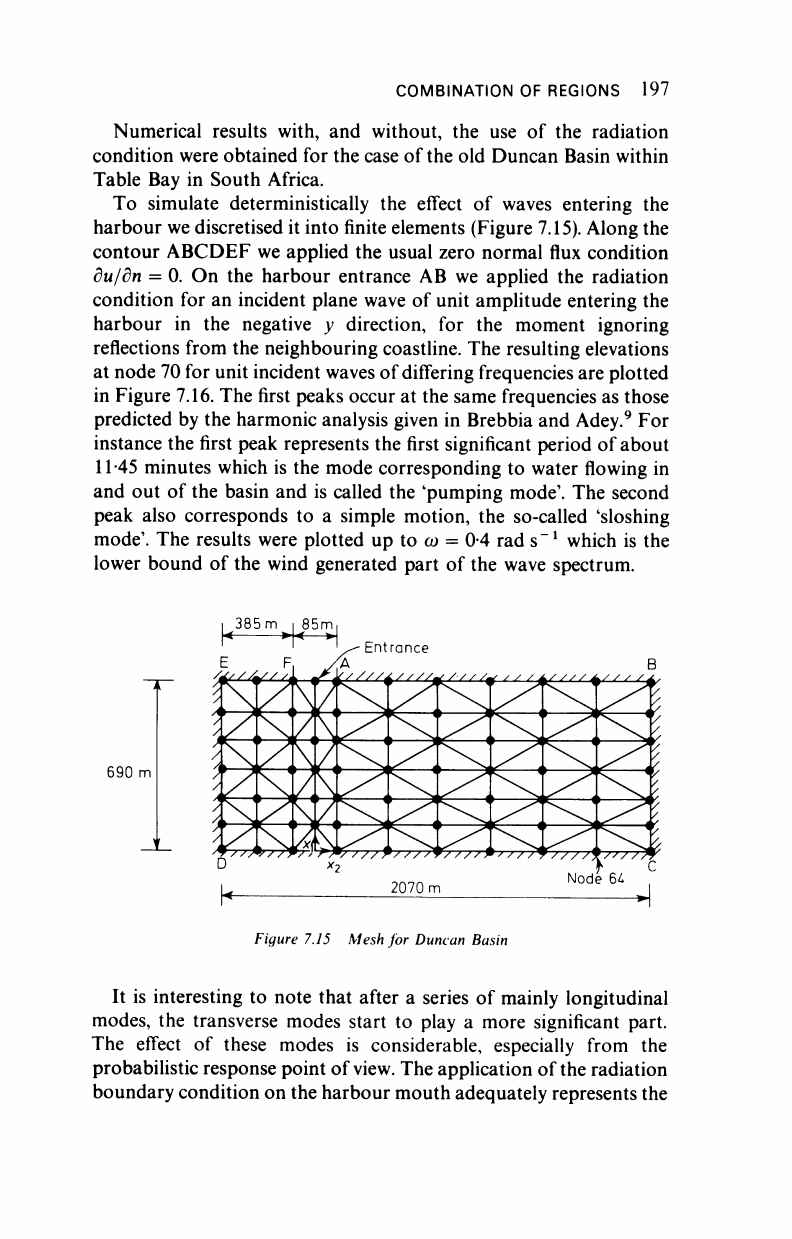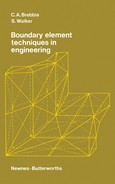
COMBINATION OF REGIONS 197
Numerical results with, and without, the use of the radiation
condition were obtained for the case of the old Duncan Basin within
Table Bay in South Africa.
To simulate deterministically the effect of waves entering the
harbour we discretised it into finite elements (Figure 7.15). Along the
contour ABCDEF we applied the usual zero normal flux condition
du/dn = 0. On the harbour entrance AB we applied the radiation
condition for an incident plane wave of unit amplitude entering the
harbour in the negative y direction, for the moment ignoring
reflections from the neighbouring coastline. The resulting elevations
at node 70 for unit incident waves of differing frequencies are plotted
in Figure 7.16. The first peaks occur at the same frequencies as those
predicted by the harmonic analysis given in Brebbia and Adey.
9
For
instance the first peak represents the first significant period of about
11*45 minutes which is the mode corresponding to water flowing in
and out of the basin and is called the 'pumping mode'. The second
peak also corresponds to a simple motion, the so-called 'sloshing
mode'. The results were plotted up to ω = 04 rad s"
*
which is the
lower bound of the wind generated part of the wave spectrum.
385m I 85m
Figure 7.15 Mesh for Duncan Basin
It is interesting to note that after a series of mainly longitudinal
modes, the transverse modes start to play a more significant part.
The effect of these modes is considerable, especially from the
probabilistic response point of
view.
The application of the radiation
boundary condition on the harbour mouth adequately represents the
690 m
..................Content has been hidden....................
You can't read the all page of ebook, please click here login for view all page.
